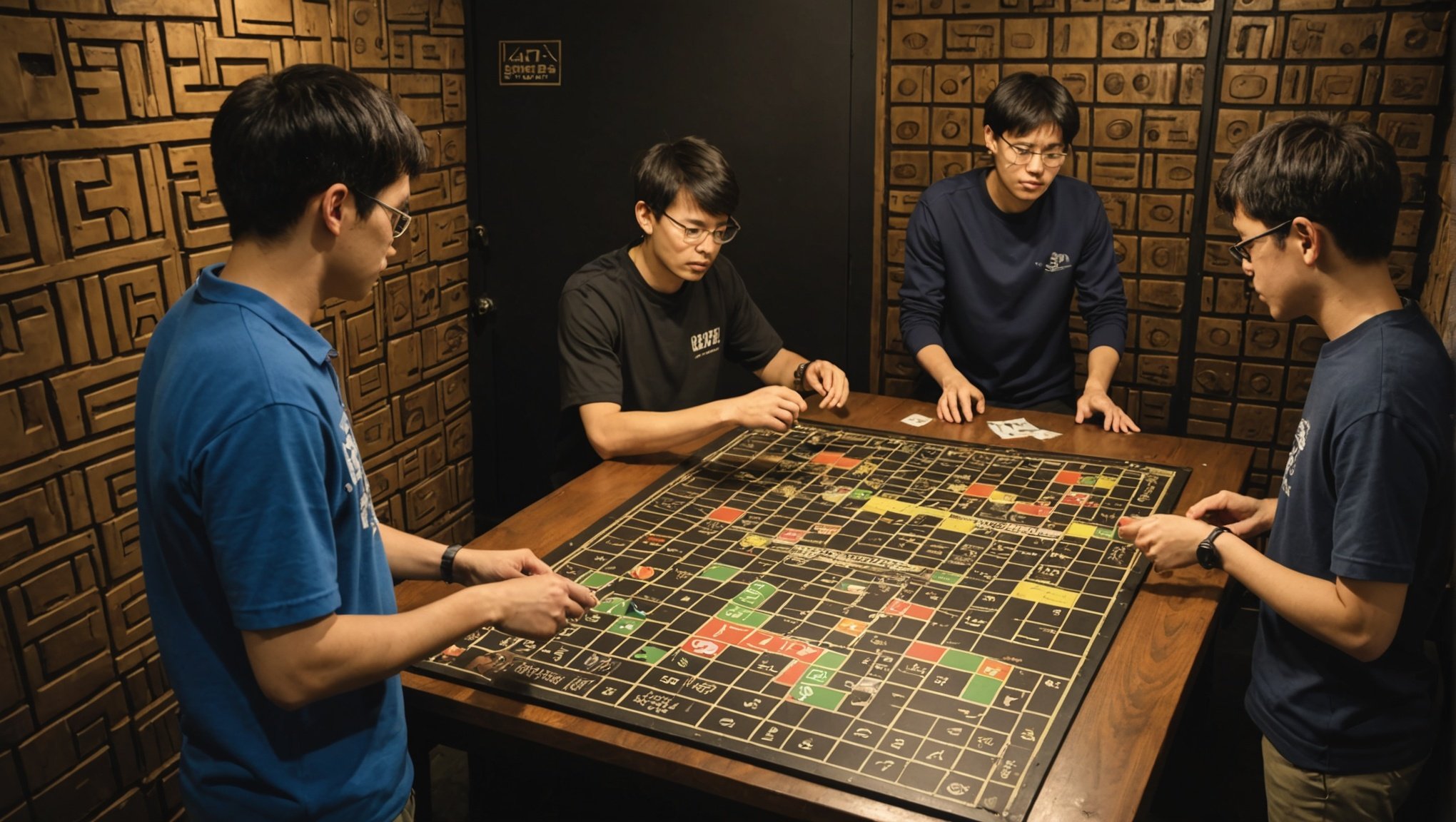Overview of AI Technologies in Escape Rooms
Escape rooms have rapidly embraced AI technologies to enhance player engagement and satisfaction. These innovations provide immersive and interactive experiences that captivate participants by adding an unexpected twist to traditional puzzle solving.
A notable integration is real-time adjustments facilitated by machine learning algorithms. This allows the escape room to dynamically alter challenges based on player behaviour and success rate. For example, if a team struggles with a particular puzzle, AI can lessen the difficulty, ensuring an enjoyable experience without frustration. Conversely, if a team excels, the difficulty can be escalated to maintain engagement.
Also read : Maximizing Fun: How Developers Can Enhance Crafting Systems in Survival Games with Real-World Physics
AI and Machine Learning in Puzzle Adjustment
Machine learning plays a crucial role by analysing player interactions and adapting puzzles accordingly. Through behaviour analysis, AI can predict the preferred solving patterns and interests of participants, tailoring the experience to fit the unique dynamics of each group.
Importance of Data Collection
Data collection is critical in this process. Every action taken by players is meticulously recorded and analysed, contributing to the continuous improvement of AI-driven escape room experiences. This ensures these experiences are not only adaptive but also progressively more intuitive and captivating. The result is an interactive experience that feels bespoke, maintaining the thrill and mystery that escape rooms promise.
Additional reading : Transforming Diving Simulations: Unleashing AI for Hyper-Realistic Underwater Physics
Real-time Difficulty Adjustment Examples
Incorporating AI integration in puzzle games transforms player experiences by dynamically adjusting the challenge level based on performance. A notable case study demonstrates this adaptability in digital escape rooms. Here, AI systems gauge player abilities by analysing actions and responses, subtly tailoring the puzzle difficulty in real time. This ensures players stay engaged and neither overwhelmed nor bored.
Puzzle difficulty adjustment doesn’t just rely on the complexity of the task. AI integration enhances player interaction by monitoring their progress and adjusting challenges accordingly. For instance, if a group is completing puzzles too quickly, the AI might introduce additional layers or obstacles to maintain interest.
Escape room operators utilise player feedback extensively when implementing AI-driven adjustments. Analyses of these comments reveal that players appreciate the fluidity and personalised nature of AI-modified challenges. They often report higher enjoyment and satisfaction levels, as puzzles feel appropriately challenging.
This adaptive model not only enhances engagement but also showcases how technological advancements can enrich traditional gameplay. When AI finely tunes puzzle difficulty, it creates a seamless blend of challenge and entertainment, encouraging prolonged participation and exploration.
Benefits of Utilizing AI in Escape Room Design
Incorporating AI technology into escape room design significantly elevates player engagement. By tailoring challenge levels to individual preferences, AI crafts personalized experiences that align with each player’s skill set and interests. This bespoke approach ensures players remain immersed and motivated, as tasks are neither too daunting nor too simplistic, thereby enhancing overall enjoyment.
The connection between AI-driven experiences and improvement in satisfaction ratings is undeniable. Players often express a heightened sense of accomplishment when faced with challenges that are cleverly tailored to their abilities. This satisfaction stems not only from successfully navigating an engaging environment but also from the unique stories and puzzles that adapt to their personal journey.
Moreover, adaptive learning plays a pivotal role for repeat customers. By analysing previous performances, AI enhances the experience during subsequent visits, crafting new challenges that build on prior interactions. This long-term adaptability encourages loyalty, as players appreciate the evolving nature of the game. Escape rooms exploiting AI’s adaptive learning can continuously surprise and enchant, fostering a desire to return. Such strategic deployment of AI offers quantifiable benefits and sets a new standard in immersive entertainment.
Challenges and Considerations in AI Integration
Integrating AI technology into escape rooms presents distinct challenges that operators must navigate to ensure a seamless experience. Implementation hurdles can arise from complex systems demanding rigorous programming and data analysis to function accurately. Developers need to consistently fine-tune algorithms to cater to scenarios specific to each environment. Without careful execution, these system intricacies could lead to user experience disruptions.
Another concern revolves around potential drawbacks related to AI adaptability. Escape rooms thrive on balancing intelligence solutions with traditional puzzle mechanics. Guests might find excessive automation leading to a diminished sense of satisfaction and achievement. It’s crucial that operators manage these technological elements so they complement, rather than overwhelm, the classic tactile engagement that many enthusiasts enjoy.
Finally, it is vital to ensure AI enhancements do not overshadow the game’s essence. Maintaining a harmonious balance between modern technology challenges and traditional elements gives players a fulfilling puzzle-solving journey. This balance not only upholds the escape room’s charm but also leverages AI benefits without compromising the user experience. Intelligent implementation and creativity in design are key to successful AI integration in escape rooms.
Expert Opinions and User Testimonials
When it comes to AI in escape rooms, a myriad of expert insights indicate a transformative potential within the industry. Experts are lauding the integration of AI for its ability to create dynamic puzzles, which adapt to players’ actions, thereby elevating the escape room experience to unprecedented levels of engagement. Many believe this will become a standard in escape room design within a few years, predicting AI will fundamentally reshape game mechanics and participant interaction.
User testimonials provide compelling evidence of enhanced immersion due to AI-driven scenarios. Players consistently report that the adaptive nature of AI leads to a more personalised and memorable experience, as AI systems respond uniquely to each player’s approach, leading to game paths that are never the same twice.
The industry, too, is taking notice. Designers are exploring the application of AI to not only refine player experiences but also to harness data analytics. This drives improvements in game design, ensuring that future projects meet evolving player expectations. Industry perspectives suggest that as technology becomes more accessible, AI-enhanced escape rooms will grow in number, inviting players to experience this advanced form of entertainment.
Actionable Tips for Implementing AI in Escape Room Design
Integrating AI into escape room design can elevate the experience to an entirely new level. Here are some effective strategies for AI implementation.
Start by identifying the key areas where AI can enhance interactivity. Consider AI-driven puzzles that adapt to players’ actions. Develop a list of potential AI implementation strategies to explore various concepts.
Next, invest time in rigorous testing. Testing and iterating are paramount to refining AI-driven puzzles. Develop multiple test scenarios to ensure reliability and engagement. Gather feedback from diverse groups to fine-tune the design until it meets players’ expectations seamlessly.
Collaboration is crucial. Work with tech experts who specialize in AI technology. By drawing on their expertise, you can ensure the technical nuances of AI implementation are well-executed. Doing so can prevent potential malfunctions and ensure the AI interacts with players effectively.
Here are some best practices to consider:
- Implement adaptive design tips for puzzles that change difficulty based on player performance.
- Prioritize user-friendly interfaces for both operators and players.
- Regularly revisit and update your AI strategies to leverage emerging technologies, keeping the escape room experience fresh and innovative.












